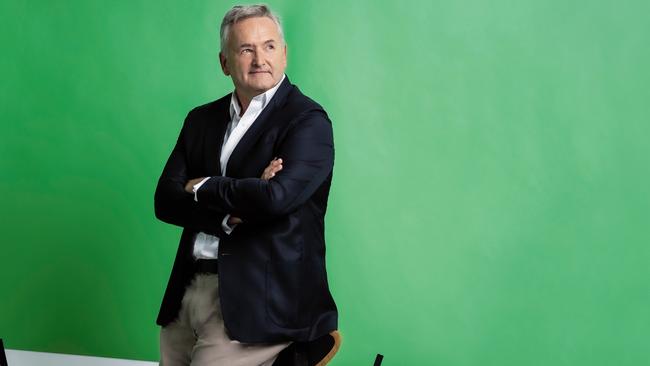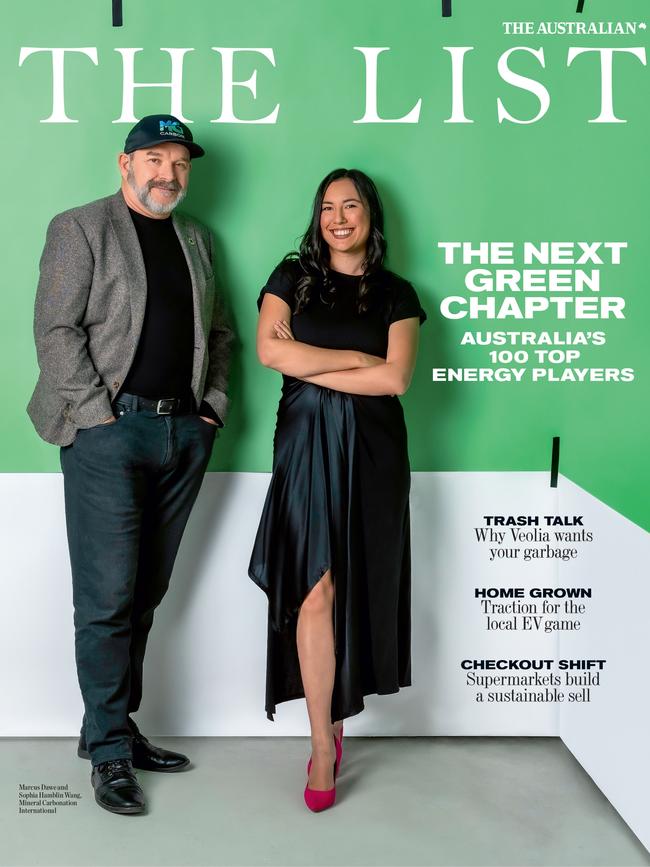Fund manager: Australia a top spot for the green dollar
David Scaysbrook is a pioneer of renewable energy infrastructure whose success has seen him make The List: Top 100 Green Energy players. But success has not come easily.

David Scaysbrook is a global pioneer of renewable energy infrastructure.
The lawyer-turned-entrepreneur-turned-fund-manager with a passion for building things is the co-founder and managing partner of Quinbrook Infrastructure Partners, one of the world’s largest renewable energy developers.
Quinbrook is working on some of the most ambitious green energy projects on the planet, including the largest renewable energy export project in the world: Australia’s $30bn SunCable, alongside its new owner, Grok Ventures, the family investment arm of Atlassian co-founder Mike Cannon-Brookes.
The firm, co-founded by Rory Quinlan, has led the largest solar and storage developments in the US and UK.
Scaysbrook’s success has seen him listed on The List: The Top 100 Green Energy Players, to be revealed in The Australian on Friday.
That success has not come easily.
“We started our first business in renewable energy in 1997 above a coffee shop in Ascot in Brisbane,” Scaysbrook says. “Those were very humble beginnings, and we had to take the business to the UK in order to survive.”
The world was different then. It was almost two decades before 196 nations signed the 2015 Paris Agreement and long before any country had set net-zero targets. “We were battling almost every force in the economy, from vested interests in industry, to politicians and government to try and get support for the sector,” says Scaysbrook.

Convincing pension funds to invest in renewable energy projects was challenging.
It didn’t fit their traditional categories of private equity buyouts or regulated infrastructure investments, and some were sceptical of the economics and need for government subsidies.
“In the early days, Australia was too difficult a place to raise money or to do projects, so we moved to London, which was the best thing we’ve ever done. London was, and still is in many respects, the centre of climate finance,” Scaysbrook says.
Quinbrook has typically focused on projects in the US and the UK, where policy settings are more developed and incentives are available. But with the Albanese government planning to grow the proportion of renewable energy in the power grid to 82 per cent by the end of the decade, Scaysbrook says the firm’s most exciting projects are now in Australia.
The first is SunCable, the monster renewable electricity export development project in the NT that includes a 20GW solar farm, the world’s largest battery, and an 800-kilometre overhead transmission line to power Darwin. The project went into voluntary administration in January after Cannon-Brookes and fellow major investor Andrew Forrest could not agree on future funding plans.
A Grok Ventures-led consortium was announced as SunCable’s successful new owner in May.
It will export 1.75GW of renewable energy to Singapore via a 4200-kilometre high-voltage undersea cable, to meet an expected 15 per cent of Singapore’s energy needs.
“It will bring a lot of jobs and investment and a green economy to the Northern Territory (and) will involve our traditional owners, bringing benefits to their communities,” says Scaysbrook.
“From that perspective, this is one of the most challenging, ambitious, and impactful projects we’re working on, and it’s going to take many years of hard work to get it there.”
The second development close to his heart involves creating a local green solar panel manufacturing industry through a series of solar, wind, storage and large-scale renewable-powered manufacturing plants in Queensland. “These are very large manufacturing plants that we have in mind that require a lot of power. So the renewable energy projects that we’re developing around Gladstone and Townsville will result in a lot of investment, a lot of jobs, and a lot of new industry,” says Scaysbrook.
The $10bn plan is to use renewable energy to power the manufacturing of components for solar modules, including polysilicon, the energy-intensive foundation of solar modules.
“These are large nation-building projects, and as an Australian, even though our firm is headquartered in London, it’s incredibly satisfying to be able to be working on these projects in our home country,” Scaysbrook says.
The Green List of the Top 100 Green Energy Players will be published in The Australian and online on November 10.





To join the conversation, please log in. Don't have an account? Register
Join the conversation, you are commenting as Logout